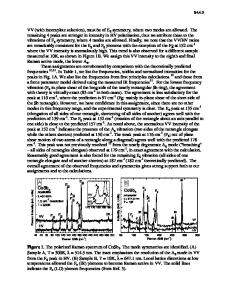Low thermal conductivity and enhanced Seebeck coefficient in Antimony and Selenium co-doped PbTe Nanopowders
- PDF / 1,594,189 Bytes
- 11 Pages / 595.276 x 790.866 pts Page_size
- 91 Downloads / 358 Views
ORIGINAL PAPER
Low thermal conductivity and enhanced Seebeck coefficient in Antimony and Selenium co-doped PbTe Nanopowders L Kungumadevi1,2*
, T S Senthil3, R Sathyamoorthy2 and S N Bhatia4
1
Department of Physics, Mother Teresa Women’s University, Kodaikanal, Tamil Nadu 624 101, India
2
Department of Physics, Kongunadu Arts and Science College, Coimbatore, Tamil Nadu 641 029, India 3
Department of Physics, Erode Sengunthar Engineering College, Erode, Tamil Nadu 638057, India
4
Department of Physics, Indian Institute of Technology Bombay, Powai, Maharashtra 400 076, India Received: 28 November 2019 / Accepted: 03 April 2020
Abstract: We report a new method to synthesize Sb and Se co-doped PbTe nanopowders by a simple aqueous chemical method without the assistance of any surfactant or template. X-ray diffraction studies revealed that the prepared nanopowders are polycrystalline in nature and crystallize in the face-centered-cubic (fcc) PbTe structure. SEM and TEM studies reveal that Sb and Se co-doped PbTe nanopowders consist of an interconnected network of spherical nanoparticles with diameters around 12 nm. Seebeck coefficient of the undoped PbTe (436 lV/K at 301 K) and co-doped PbTe (627 lV/ K at 301 K) is enhanced compared to that of the bulk PbTe (265 lV/K at 298 K) and the thermal conductivity is drastically decreased [undoped PbTe (0.265 W/m-K) and co-doped PbTe (0.525 W/m-K) at 378 K] compared with the value for the bulk PbTe (2.2 W/m-K at 300 K). The dimensionless figure of merit ZT attains its maximum value 0.055 at 378 K for undoped and 1.09 9 10-5 at 352 K for co-doped PbTe.
*Corresponding author, E-mail: [email protected]
Ó 2020 IACS
L Kungumadevi et al.
Graphic abstract
Keywords: PbTe; Chemical synthesis; Nanostructures; Thermoelectric; Transport properties
1. Introduction The global need for efficient energy management has renewed the interest in solid-state power generation from thermal sources with the use of thermoelectric materials. High efficiency thermoelectric (TE) materials are important for power generation devices that are designed to convert waste heat into electrical energy. They can also be used in solid-state refrigeration devices. The conversion of waste heat into electrical energy may play an important role in our current challenge to develop alternative energy technologies to reduce our dependence on fossil fuels and reduce greenhouse gas emissions. It has been known that a good thermoelectric material should possess a set of physical properties such as a large Seebeck coefficient (S), high electrical conductivity (r) and a low thermal
conductivity (j) so as to be fruitfully exploited in thermoelectric (TE) devices. These properties define a dimensionless figure of merit (at a temperature T), 2 ZT ¼ S jrT , which is required to be high for the commercial viability of the device. However, the interdependence of the physical parameters involved in this expression complicates the efforts to develop straightforward strategies to discover materials with such high va
Data Loading...










